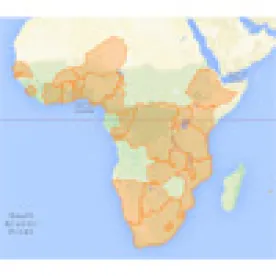Well-known as a destination for experiencing some of the world’s most breathtaking natural assets, the Sub-Saharan African region is making progress in staking a larger claim to the multibillion dollar medical tourism industry and is the fastest growing region for wellness tourism. Strategic trade and investment policies have played a significant role in these advancements.
With its speedy, high quality and low cost health services sector, South Africa indisputably is the continent’s leader. By entering into bilateral health agreements with approximately twenty other African countries, South Africa has greatly facilitated travel to the country for medical reasons. Nearly 80% of the country’s medical visitors come from other African countries and, as a more general matter, medical tourism “is one of the few industry areas where intra-Africa trade surpasses that of countries outside the continent.”
Looking to leverage its close geographic proximity to Europe and North Africa and become a regional medical hub, the Tunisian government has put in place a range of measures to attract both investors and medical visitors. These incentives include “tax exoneration on medical equipment and devices and a 50% tax break on all investments related to medical institutions and infrastructure.” The Tunisian government also has undertaken the construction of a $50 billion dollar Tunisia Economic City, a mega-project that will “devote[] a significant portion of its space” to hospitals, clinics, research institutions and other health and wellness facilities.
However, Morocco also is trying to establish itself as the region’s medical hub. Although the country enjoys “many of the same advantages” as Tunisia, Morocco “also benefits from a full open skies agreement with the [European Union] and, as a result, from the availability of numerous budget airline flights destinations throughout the country from airports across Europe.” In a move that has been described as “a game changer,” earlier this year Morocco liberalized its healthcare sector by passing a legal framework under which “individuals who are not doctors as well as financial investors (both local and international) will have the right to own a clinic.” Another key development is the recent announcement by Tasweek Real Estate Development and Marketing (of the United Arab Emirates) that the company will invest $3 billion to “create advanced ‘Healthcare Cities’ in Tangiers, Agadir and Casablanca.”
Kenya and Rwanda are in their own competition for regional dominance of East Africa’s medical tourism industry due to “[a] diverse set of forces, including favourable economic factors, a supportive regulatory environment, and a high disease burden.” The East African Community (“EAC”) has recognized Rwanda’s efforts by selecting the country to serve as “the region’s center of excellence in e-health, biomedical engineering, health vaccines and immunization logistics.” Its responsibilities in this role will include providing “‘e-health solutions like storage of medical records using high technology,’ […] engineering knowledge for medical equipment like scanners and teaching how vaccines are efficiently procured and stored.” The EAC has selected Kenya to be responsible for creating a center of excellence in the field of urology.
Each of these markets demonstrate the various opportunities for private investors to become involved in the alive and thriving medical tourism industry in Sub-Saharan Africa.



 />i
/>i

